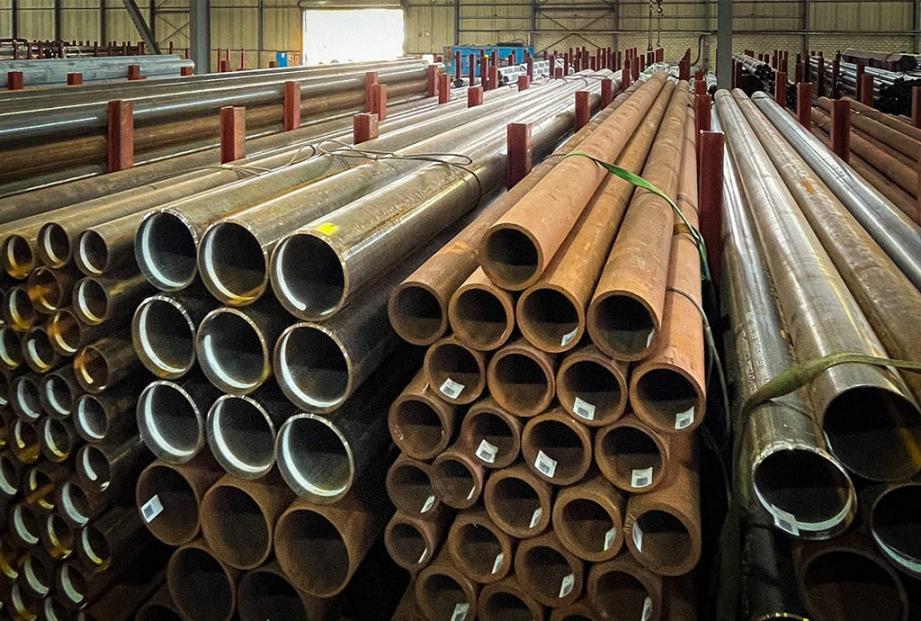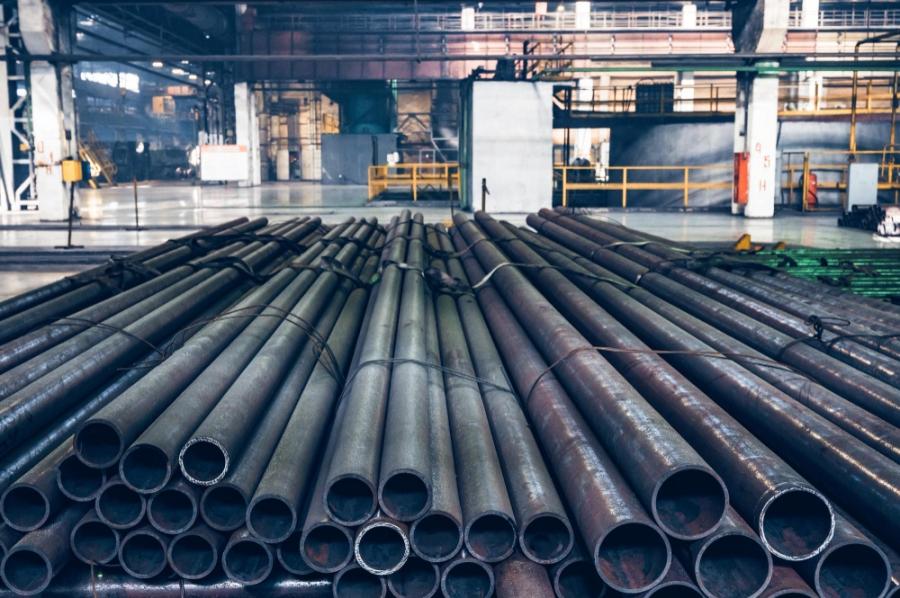Exploring the Properties and Applications of SA 106 GR B Steel
SA 106 Grade B Steel is a high-temperature carbon steel alloy renowned for its robustness and versatility in various industrial applications. Understanding its properties and applications is crucial due to its widespread use in critical environments such as refineries, power plants, and boilers. Cangzhou Shenlong, with over three decades of expertise in steel pipe production, is a trusted provider known for adhering to the stringent ISO9001 standards, ensuring consistent quality and reliability. With an impressive track record boasting a 100% qualification rate over the past five years, Cangzhou Shenlong stands as a reliable source for SA 106 GR B Steel, delivering products that meet the highest industry standards.

Composition and Manufacturing Process
Chemical composition
SA 106 GR B Steel typically consists of carbon, manganese, phosphorus, sulfur, silicon, and traces of other elements. The exact composition is crucial for determining the steel's mechanical and physical properties.
Manufacturing methods and processes
The manufacturing of SA 106 GR B Steel involves processes such as hot rolling or cold drawing to achieve the desired dimensions and properties. Precise control over temperature, pressure, and cooling rates ensures uniformity and integrity in the final product.
Quality control measures
Cangzhou Shenlong implements rigorous quality control measures to ensure the integrity of SA 106 GR B Steel. These include hydrostatic testing, ultrasonic testing, eddy current testing, magnetic particle testing, impact testing, and hardness testing. Each step is meticulously conducted to meet ISO9001 standards and guarantee the highest quality products.
Mechanical Properties
Strength characteristics
SA 106 GR B Steel exhibits excellent tensile and yield strength, making it suitable for high-pressure and high-temperature applications. Its strength characteristics contribute to the structural integrity and reliability of various industrial systems.
Toughness and ductility
The steel demonstrates good toughness and ductility, allowing it to withstand impact and deformation without fracturing. This property is vital for applications subjected to dynamic loading and stress concentrations.
Hardness and wear resistance
SA 106 GR B Steel possesses adequate hardness to resist abrasion and wear, ensuring longevity and durability in demanding environments. Its resistance to wear makes it a preferred choice for components exposed to abrasive substances or friction.
Impact resistance
The steel's ability to absorb energy and withstand sudden loads without failure underscores its exceptional impact resistance. This property is essential for applications prone to impact or shock loading, safeguarding equipment and structures from catastrophic failure.
Physical Properties
Density and specific gravity
SA 106 GR B Steel exhibits a specific gravity and density characteristic of carbon steel alloys. Understanding these properties is essential for calculating weight, volume, and buoyancy in structural design and material selection.
Thermal conductivity
The steel's high thermal conductivity enables efficient heat transfer, making it suitable for applications involving heat exchange and thermal management. Its ability to conduct heat efficiently enhances the performance and reliability of heat transfer systems.
Electrical conductivity
While not primarily designed for electrical conductivity, SA 106 GR B Steel possesses moderate electrical conductivity, suitable for certain electrical grounding and shielding applications.
Thermal expansion coefficient
The steel's thermal expansion coefficient determines its dimensional changes in response to temperature variations. Knowledge of this property is crucial for designing structures and systems to accommodate thermal expansion and contraction without compromising integrity.
Corrosion Resistance
Corrosion Resistance in Various Environments
SA 106 Grade B Steel demonstrates notable resistance to corrosion across a spectrum of environments, encompassing aqueous, acidic, and alkaline conditions. This inherent corrosion resistance ensures enduring reliability and durability in diverse industrial settings.
Influential Factors on Corrosion Resistance
The corrosion resistance of SA 106 GR B Steel is influenced by multiple factors, including its alloy composition, surface finish, environmental variables such as temperature and humidity, and exposure to corrosive agents. Understanding these factors is pivotal for managing corrosion risks and optimizing performance.
Methods for Corrosion Prevention
Various methods are employed to bolster the corrosion resistance of SA 106 GR B Steel, including the application of protective coatings, utilization of cathodic protection systems, deployment of corrosion inhibitors, and adherence to meticulous maintenance practices. These strategies collectively extend the steel's service life and mitigate the likelihood of corrosion-related failures.
Applications
Pipelines and Piping Systems
SA 106 GR B Steel finds extensive utility in the fabrication of pipelines and piping systems for fluid and gas transport across industries such as oil and gas, petrochemicals, and water treatment. Its blend of strength, durability, and corrosion resistance renders it an optimal choice for these critical applications.
Pressure Vessels
The steel is commonly employed in crafting pressure vessels utilized in diverse industrial processes encompassing chemical manufacturing, power generation, and pharmaceutical production. Its capacity to endure high pressures and temperatures ensures the secure containment of fluids and gases under demanding operational conditions.
Heat Exchangers
SA 106 GR B Steel is preferred for constructing heat exchangers integral to HVAC systems, refrigeration units, power plants, and industrial processes. Its commendable thermal conductivity and corrosion resistance make it well-suited for facilitating efficient heat transfer while withstanding corrosive surroundings.
Boiler Tubes
Extensively used in the fabrication of boiler tubes for power generation and steam production applications, SA 106 GR B Steel boasts high-temperature and pressure resistance alongside corrosion resilience, guaranteeing steadfast performance and longevity in rigorous boiler environments.
Other Industrial Applications
SA 106 GR B Steel finds broad application across various industrial sectors including construction, automotive, aerospace, and machinery manufacturing. Its trifecta of strength, durability, and corrosion resistance renders it indispensable for an array of structural and component applications.
Future Prospects and Research
Emerging Trends in SA 106 GR B Steel Usage
Anticipated growth in the utilization of SA 106 GR B Steel is fueled by escalating demands for infrastructure development, energy generation, and industrial expansion. Emerging trends encompass its integration into renewable energy initiatives such as solar and wind power, alongside ongoing enhancements in manufacturing processes aimed at augmenting its properties.
Ongoing Research and Developments
Continual research endeavors concentrate on optimizing the composition and manufacturing processes of SA 106 GR B Steel to bolster its mechanical, physical, and corrosion-resistant attributes. Concurrently, investigations explore innovative surface treatments and coatings to amplify its efficacy in corrosive environments.
Potential Enhancements and Innovations
Future advancements in SA 106 GR B Steel may encompass the development of alloys endowed with heightened corrosion resistance, superior strength-to-weight ratios, and enhanced weldability. Innovations in fabrication methodologies and material processing hold promise for delivering cost-effective solutions endowed with superior performance characteristics, thereby broadening its application scope across diverse industries.
In Conclusion
Delving into the properties and applications of SA 106 GR B Steel reveals its significant role in diverse industrial sectors. With commendable corrosion resistance, robust mechanical properties, and versatile applications ranging from pipelines to pressure vessels, this steel alloy stands as a cornerstone of modern infrastructure. Continued research and innovation promise to further enhance its performance and broaden its utility, ensuring its enduring relevance in meeting the evolving needs of various industries.






